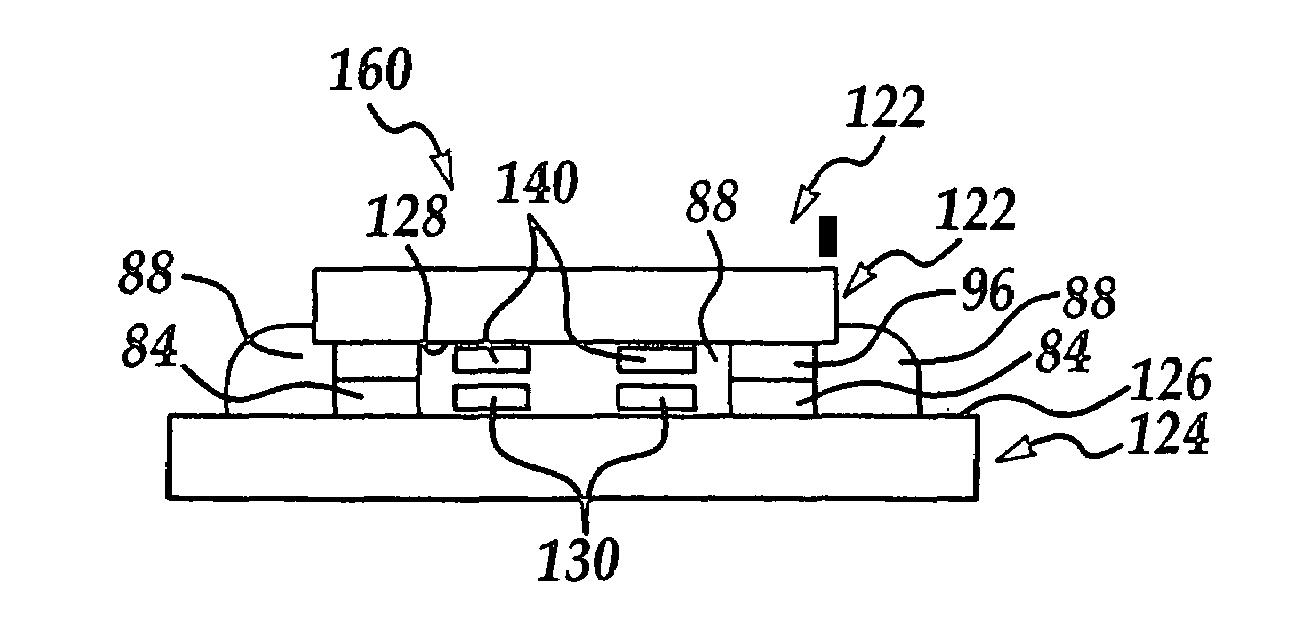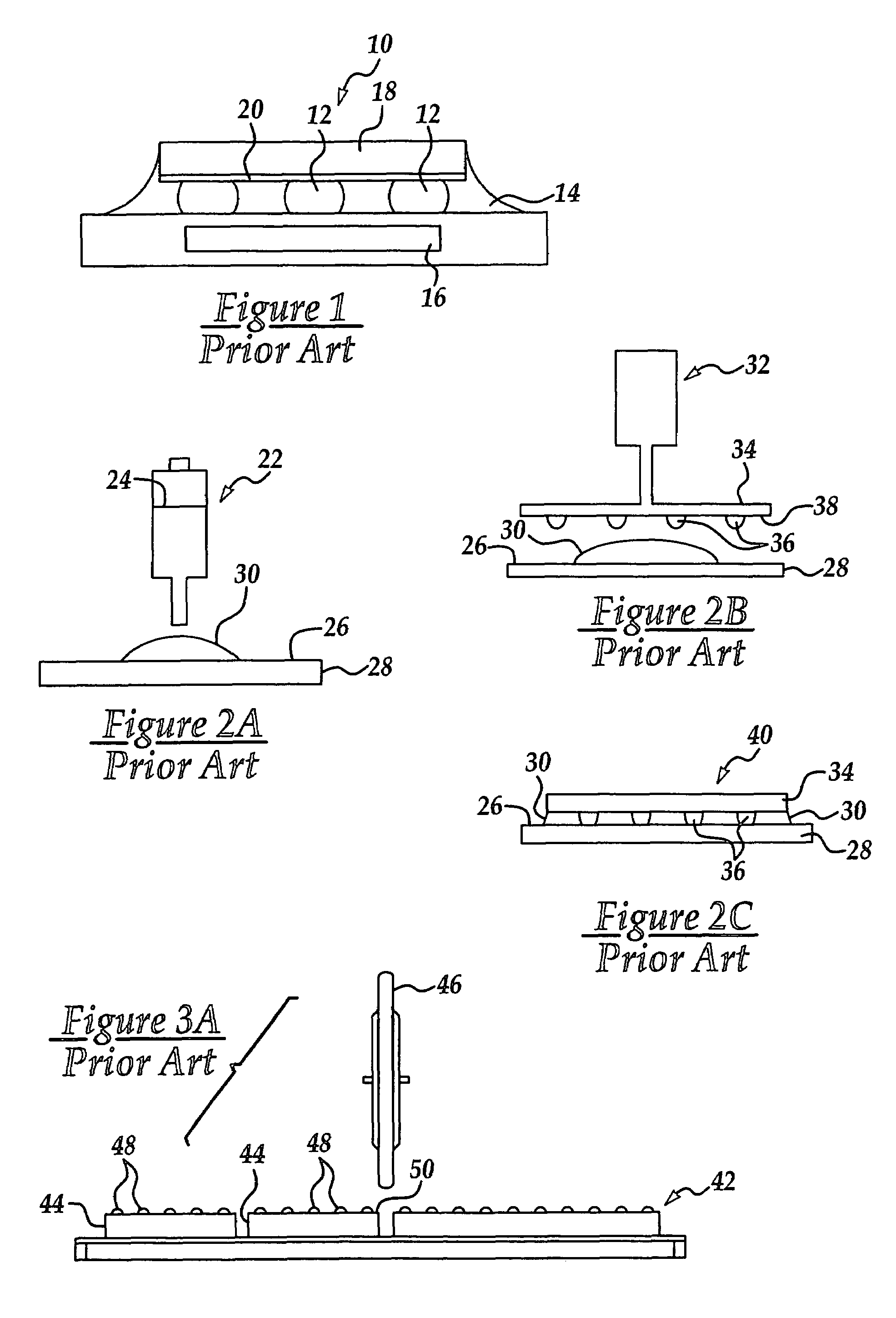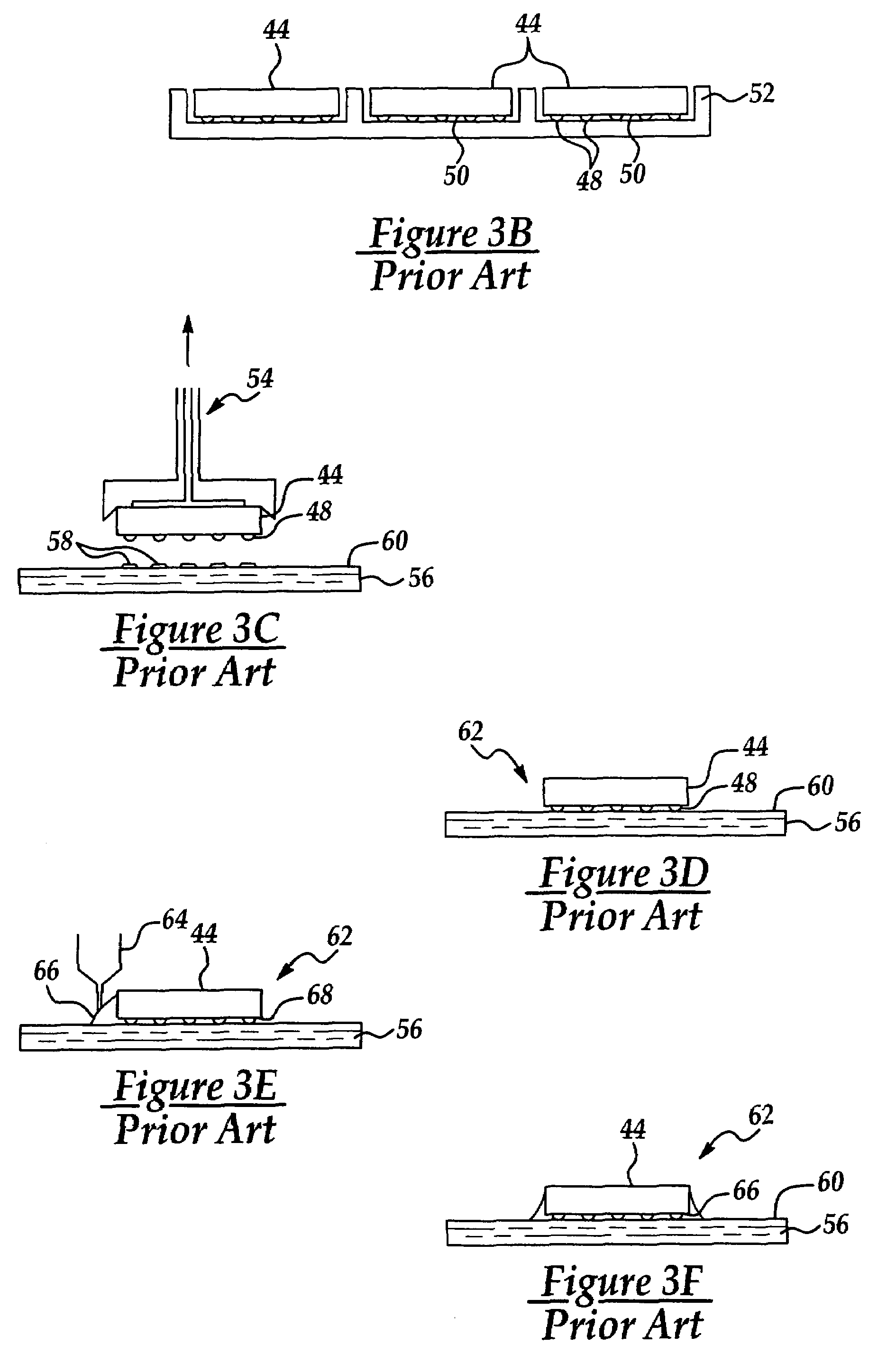Method for bonding IC chips to substrates incorporating dummy bumps and non-conductive adhesive
a technology of ic chips and substrates, which is applied in the direction of printed circuit assembling, printed circuit manufacturing, stress/warp reduction, etc., can solve the problems of premature failure of solder connections, mismatch of thermal expansion coefficients between printed circuit boards and silicon chips, and time-consuming task of filling gaps between silicon chips and substrates
- Summary
- Abstract
- Description
- Claims
- Application Information
AI Technical Summary
Benefits of technology
Problems solved by technology
Method used
Image
Examples
Embodiment Construction
[0054]The present invention discloses an IC chip / substrate assembly bonded together by a non-conductive adhesive and a method for forming the IC chip / substrate assembly.
[0055]The IC chip / substrate assembly is formed by an IC chip, a substrate and a non-conductive adhesive disposed therein between. The IC chip has bumps formed on an active surface, wherein the bumps may be formed of Au, Ni, or Sn-containing (solder-type) alloys.
[0056]The substrate has a plurality of bond pads formed on a top surface. The plurality of bond pads may be formed of copper, aluminum or any other suitable metal.
[0057]While the present invention method for bonding an IC chip to a substrate can be used in any semiconductor assembly applications, it is particularly suitable for bonding an IC chip which is a driver chip for a LCD display panel to a flexible substrate.
[0058]Referring now to FIG. 7A, wherein a present invention IC chip / substrate assembly 120 formed by an IC Chip 122 and a substrate 124 is shown. ...
PUM
 Login to View More
Login to View More Abstract
Description
Claims
Application Information
 Login to View More
Login to View More - R&D
- Intellectual Property
- Life Sciences
- Materials
- Tech Scout
- Unparalleled Data Quality
- Higher Quality Content
- 60% Fewer Hallucinations
Browse by: Latest US Patents, China's latest patents, Technical Efficacy Thesaurus, Application Domain, Technology Topic, Popular Technical Reports.
© 2025 PatSnap. All rights reserved.Legal|Privacy policy|Modern Slavery Act Transparency Statement|Sitemap|About US| Contact US: help@patsnap.com



